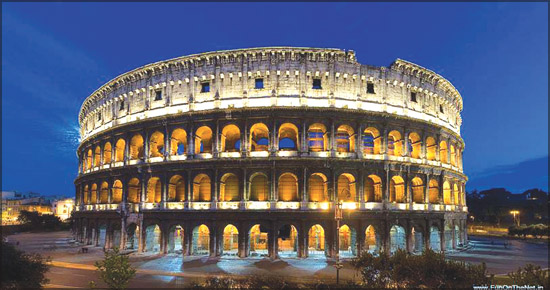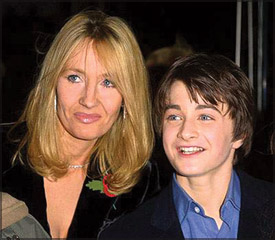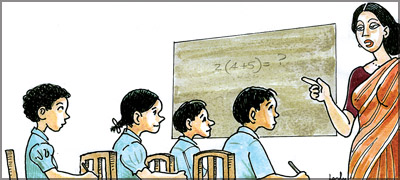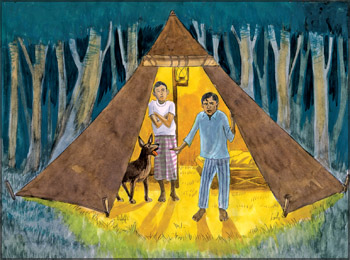|
children
The Roman Colosseum
Over the past few weeks we have been featuring the seven wonders of
the world. We have already featured the Great Wall of China and the Taj
Mhal. Today we have another wonder for you children , where we feature
the Roman Colosseum.
The Roman Colosseum is a tremendous amphitheater, the embodiment of
both the grandeur and cruelty of the great Roman Empire. Capable of
seating 50,000 spectators, the Colosseum hosted spectacular games that
included gladiator exhibitions, fights between animals, prisoner
executions and strangely enough naval battles. Untold thousands of
humans and animals met their ends within one of the most popular
attractions in Rome.

Located just east of the entrance to the Roman Forum, the swarms of
tourists and honking of cars (who use the Colosseum’s circular structure
as one of the world’s most intimidating traffic circles) make the Roman
Colosseum hard to miss. It is a staple of any sightseeing journey
through the busy streets of Rome, and a ticket to view its grandeur can
often be bought in conjunction with a tour of nearby Palatine Hill.
The Colosseum’s name is derived from a bronze colossus of Nero that
once stood nearby, though it disappeared sometime during the Middle Ages
and has largely been forgotten. Construction was begun by Emperor
Vespasian and completed by his sons in the late first century. The arena
floor was covered with sand to soak up the blood shed by those humans
and animals unlucky enough to find themselves in its center.
Its elliptical shape kept the players from retreating to a corner and
allowed the spectators to be closer to the action than a circular arena
would allow - the design of the Colosseum in Rome has influenced nearly
every modern venue.
Seating was divided into different sections. The first level of
seating was restricted for Roman senators and included the emperor’s
private box. The section above the podium was for lower Roman
aristocrats. The third level was divided itself into three sections.
The best of these seats was reserved for wealthy citizens, the upper
part for the poor and a third, wooden section was left for lower-class
women. The Roman Colosseum incorporated a number of passageways that
opened into a tier of seats so that the entire structure - one of the
largest tourist attractions in Rome even then - could fill in 15
minutes, and be evacuated even quicker.
A day of festivities at the roman Colosseum usually opened with a
series of wild animal matches. Tigers, lions, elephants and even
giraffes would fight each other, or humans, or both. Midday brought the
morbid spectacle of public executions before the main event: the
Gladiator matches. Depending on the day’s structure, however, sometimes
these events would be combined into one long, chaotic battle.
Eventually, Christian leaders ensured that humans were no longer
executed within the Colosseum’s great walls, though the building was
still used for animal hunts until around 524. Four major earthquakes
took their toll on the structure though, and by the Middle Ages the
Colosseum in Rome had been fully converted into a military fortress,
before finally being relegated to existing as the world’s largest rock
quarry.
During the Baroque age the marble that originally covered the facade
was redistributed by the ruling Roman families who used it as a source
of marble for the construction of St. Peter’s Basilica and their private
Palazzis, a fate that also befell the equally monstrous Circus Maximus
located on the other side of Palatine Hill.
In the 18th century, Pope Benedict XIV eventually ended the use of
the Colosseum in Rome as a giant quarry. He promptly consecrated it and
installed the Stations of the Cross, declaring it sanctified by the
blood of many Christian martyrs who were (inaccurately, as it turns out)
thought to have perished there.
15th Kanagawa Biennial World Childrens’ Art Exhibition
For the fifteenth consecutive time, the United Nations Association
will accept entries from schoolchildren across the country between the
ages 4 and 15 (inclusive) to be submitted as entries to the 15th
Biennial which will be held in Kanagawa, Japan in April 2009.
Entries have been collected and submitted through the UNA to every
biennial since the inception of the series in 1980 and as such, entries
submitted through the UNA have won 67 gold, silver, bronze, or special
awards up to date and also the World Grand Prize (in 1982) which took a
Sri Lankan school girls to Japan for the first time in the country’s
educational history to collect the award in person.
Paintings and drawings can be submitted on any subject of the
artist’s choice and can be painted by any method but should not be
bigger than 54 cm X 38 cm.
Behind each entry, the name of the contestant, date of birth, age as
of April 01, 2009, sex, private address, title of the painting, name and
address of the school, (if any), should be clearly stated. All
particulars should be given only in English.
All entries must be addressed to the Chairman, Kanagawa Committee,
United Nations Association, and received at the National
Secretariat-General of the Association, at 39/1 Cyril Jansz Mw, Panadura
12,500 on or before November 15.
On the top left hand corner of the cover or wrapper containing the
painting or drawing the following should be specified - 15th Kanagawa
Biennial 2008/2009.
Dharmadasa Vitharana
Chairman
Kanagawa Committee
United Nations Association
Harry Potter
| The Children’s Page features miniprofiles
of famous childrens’ authors with September 8 designated by
the United Nations as International Literacy Day. Sri Lanka
has also declared September as Literary Month. |
|

J. K. Rowling and Daniel Radcliffe |
This week we feature J. K. Rowling, the author of the Harry Potter
series, which I am sure you children must be big fans of.
Harry Potter is a series of seven fantasy novels written by British
author J. K. Rowling. The books chronicle the adventures of the
eponymous adolescent wizard Harry Potter, together with Ron Weasley and
Hermione Granger, his best friends from the Hogwarts School of
Witchcraft and Wizardry. The central story concerns Harry’s struggle
against the evil wizard Lord Voldemort, who killed Harry’s parents in
his quest to conquer the Wizarding world, after which he seeks to
subjugate the Muggle world to his rule.
Since the release of the first novel Harry Potter and the
Philosopher’s Stone in 1997, which was retitled Harry Potter and the
Sorcerer’s Stone in the United States, the books have gained immense
popularity, critical acclaim and commercial success worldwide. The
series has spawned films, video games and Potter-themed merchandise.
 My class teacher My class teacher
The name of my class teacher is Miss Mahira. She lives in Kithalawa.
She comes to school by a three-wheeler. She is tall and fat. She’s
beautiful. She always wears sarees to school. My class teacher is kind
and good. She teaches us Environment Related Activities and Tamil.
Everybody loves her. She lives with her brother, sister and mother. I
love her very much and wish her good luck.
Hiruni Sawanika Vidanapathirana
Grade 3
Ceylinco Sussex College
Kuliyapitiya
Deep in the woods... Part 2
By Uncle Sachi and Aunt Ruwi
 “Yeah, who knows if we might come across some wild beasts like lions,
tigers and grizzly bears,” shouted Nalaka, his eyes bright with
interest. “Yeah, who knows if we might come across some wild beasts like lions,
tigers and grizzly bears,” shouted Nalaka, his eyes bright with
interest.
 “Don’t be silly. These woods are perfectly safe from such dangerous
creatures. The only animals you will come across are a few birds,
rabbits and squirrels,” their mother said, shooting him an annoyed look.
Champika who had been frightened by her brother’s reply relaxed but
edged close to her mother’s side. “Don’t be silly. These woods are perfectly safe from such dangerous
creatures. The only animals you will come across are a few birds,
rabbits and squirrels,” their mother said, shooting him an annoyed look.
Champika who had been frightened by her brother’s reply relaxed but
edged close to her mother’s side.
Scooby’s ears pricked up at once at the sound of the word
‘squirrels’. He gave a small whine and looked up at them.
“Oh no, Scooby. I didn’t mean your four friends who come to the
windowsill every morning for breakfast,” she laughed stroking his silky
head. Scooby gave a short yap as if agreeing before laying down near the
tents with a big yawn.
“Well boys and girls. I don’t know about you all but I’m quite
exhausted after that drive. Why don’t we all get a good sleep tonight?”
their father asked. Normally the kids would have pleaded to stay up a
little longer but much to their surprise they found that they were
feeling very tired.
It felt rather nice to get into the cosy bed made by their mother and
snuggle under the warm blankets.
“My bed smells of fresh hay,” said Champika sleepily as their mother
tucked her in. Soon all four were fast asleep. Scooby plopped himself on
a rug by their side, his ears pricked for the slightest noise.
The moon shone brightly and a fresh breeze ruffled the leaves of
trees nearby. The air was silent except for the murmer of the stream and
the occasional snore coming from Champika.
Soon a rabbit came scampering by and stopped to sniff into the
opening of the tent. Scooby growled at once and the rabbit leapt away in
fright. It was nearing dawn when something awoke Nalaka. He sat up and
rubbed his eyes trying to gather why his room looked different.
Another quick glance reminded him that that he was out in the woods
camping with his family. Rubbing his eyes he gave a great yawn and saw
that Scooby was sitting up alert, his ears twitching.
“Hey, what’s up old chap?,” he asked trying to stifle another yawn
and then he heard the noise, soft and eerie ascending in with each
second. It sounded as if a creature was wailing in pain.
Scooby jumped to his feet at once, his teeth bared. Pramodaka woke
with a start.
“What’s going on?,” he questioned squinting up at his brother.
Scooby growled more fiercely waking both Chinthaka and Champika.
What’s making the noise lurking in the woods? Will the kids and
Scooby uncover the mystery?
Stay tuned for the next chapter of the story.
| Education is an ornament in prosperity
and a refuge
in adversity - Aristotle |
The Value of Education

Dear Children,
Education is the most valuable asset one can have. So, children you
are given enough opportunities both in school and after school to study
and be educated. For adults, these opportunities are limited because
they have other responsibilities and commitments. So, childhood is the
best period to make the best use of precious time.
The difference between an animal and human being is the intelligence
and knowledge possessed by humans. The Buddha and also other religious
leaders preached the importance of mind development. A sound mind is the
foundation for building a successful life.
Through intelligence and know-how only can we select right from
wrong, good friends from bad, good habits from bad, good advise from bad
and so on.
Through Education and awareness only the Government can build unity
among different ethnic communities. Make the maximum use of Free
Education introduced by C. W. W. Kannangara considered as the Father of
Free Education.
September 8 being declared as the International Literacy Day and
Literary month (September) as well , everyone should focus on reading
books. It’s a good habit that you must cultivate from your young days.
Keep reading. - Aunt Anji
|

